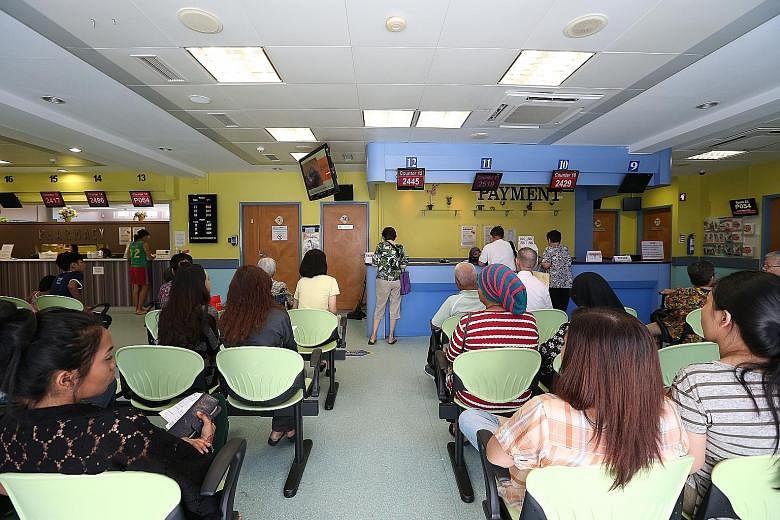The healthcare sector is sitting on a wealth of data that it is learning to mine to better match patient needs and services.
For example, the National Healthcare Group (NHG) knows that 28 out of 100 polyclinic patients with no chronic ailments will develop one or more chronic problems within six years if nothing is done to prevent this.
This data comes from a cohort of about 220,000 patients at three of its polyclinics which it has been tracking since 2008. It showed that the number of visits by that group fell over the years.
An NHG spokesman said the drop is likely because it has engaged partners to provide patients with more holistic care, including giving public education, screening for chronic ailments and working with general practitioners for patients with the CHAS card so they do not always need to go to a polyclinic.
Professor Philip Choo, NHG's chief executive officer, said data has "the potential to revolutionise healthcare" as it helps providers better understand the causes of chronic diseases and help patients to prevent or control them.

He said: "NHG holds strongly that chronic diseases can be reduced or delayed...with early interventions and behavioural changes."
It also has data from its almost 800,000 polyclinic patients which shows how different patients consume its services.
The biggest users are infants up to the age of one year as many go to polyclinics for their vaccinations. They make 5.6 visits a year.
Those aged 65 years and older visit polyclinics more than five times a year - or twice as often as young adults.
Such data was used in NHG's planning for the Pioneer Family Healthcare Centre, which will open in 2017. Aside from the current demand from the region, it had to take the ageing population into account.
It also mapped out the impact of Pioneer on the nearest polyclinics.
Dr Teow Kiok Liang, one of NHG's 21 specialists in its Health Services and Outcomes Research, said that while proximity is one of the biggest factors in deciding which polyclinic a patient uses, other factors also have to be taken into account.
These include ease of travel to the polyclinic and, sometimes, a patient's wish to remain with the same doctor.
The team also looked at data from Tan Tock Seng Hospital to identify where patients who are hospitalised there at least three times a year come from.
NHG is then able to provide such information to voluntary welfare organisations, which can then focus more on the areas of need.
Said Prof Choo: "The ability to connect multiple data sources becomes increasingly more critical to ensure the right information gets to the right care provider at the right time."
With greater access to care in their neighbourhood, some of these patients are better able to keep their conditions stable, thus reducing their need to rush to hospital for treatment.


